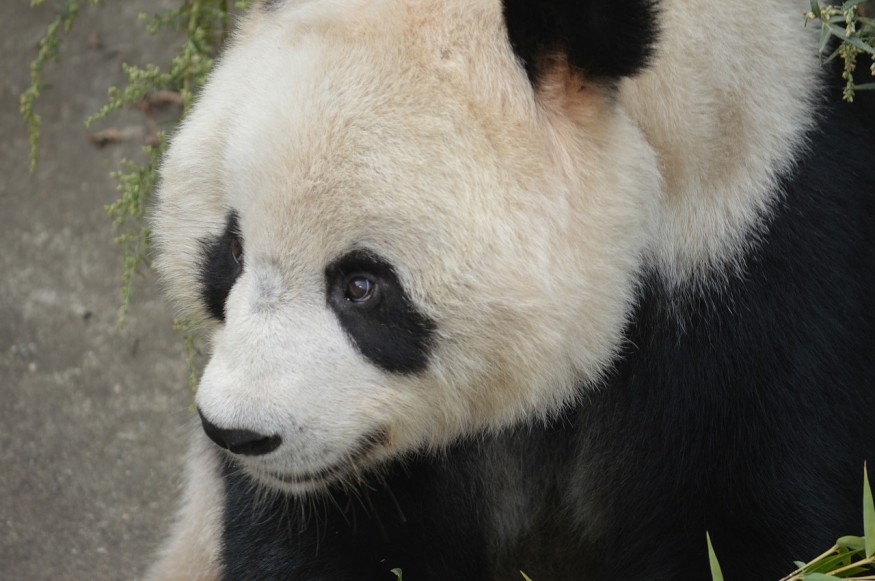Mei Xiang, a 22-year old panda resident of the Smithsonian National Museum since 2000, gave birth on August 21, 6:35 p.m. Eastern Time.
View this post on Instagram️ See and listen to the joyous moment when our giant panda cub was born at 6:35 p.m.! The animal care team reports mom Mei Xiang and cub appear to be doing well. #PandaStory #PandaCubdates A post shared by Smithsonian's National Zoo (@smithsonianzoo) on Aug 21, 2020 at 5:48pm PDT
The sex of the cub, which is as big as a stick of butter, is still unknown and will be determined after the neonatal exams are completed. The mother immediately picked up the cub after birth and cared for it attentively, according to the statement released by the Zoo.
Giant Pandas
Steve Monfort, Director of the Smithsonian's National Zoo and Conservation Biology Institute, said that the birth of the precious cub offers the world a "much-needed moment of joy" as Giant pandas are a global icon of "endangered wildlife and hope."
Mei Xang, Monfort added, was of advanced maternal age, and thus changes of having a cub were slim, but the Zoo wanted to give her another shot to contribute to her species' survival. Monfort also acknowledged the animal care and science teams whose expertise, he said, was crucial to this conservation endeavor's success.

Giant pandas are icons of conservation around the world. Recently, the wild population is has reflected a 17 percent increase in people over the past decades, prompting the International Union for Conservation of Nature (IUCN) to elevate its status from "endangered" to "vulnerable."
There are now around 1,800 pandas in the wild, and there are 500 being held in captivity. The species remain vulnerable as its habitats are threatened by deforestation and climate change.
The birth of the new cub marks a significant victory as it reflects the progress among zoos and its breeding programs. Conservation experts admit that it is difficult to breed pandas in captivity.
Mei Xiang
Mei Xiang, the mother of the cub, was wandering around her enclosure in March. She had all the signs of ovulation: marking her pen with scent, vocalizing, and playing with water, increased concentration of estrogen in her urine.
Smithsonian Conservation Biology Institute (SCBI) and Zoo veterinarians artificially inseminated Mei Xang on March 22 from Tian-tian, the 22-year old male giant panda's frozen sperm. Tai Shan, Bao Bao, and Bei Bei, Mei Xiang's cubs were conceived through artificial insemination from Tian Tian's sperm as he had difficulty with natural procreation before.
The staff closely monitored Mei Xiang for a possibility of "pseudopregnancy," a condition wherein the female has all the symptoms of being pregnant sans the fetus. Mei Xiang had histories of pseudopregnancies. Fortunately, veterinarians detected a developing fetal tissue on the ultrasound and spine, and blood flow was visible as it moved through the womb.
Mei Xiang is at the advanced age of her maternal life, making the birth more special as female pandas usually stop being fertile after their early twenties.
Mei Xiang and her baby are now housed at the David M. Rubenstein Family Giant Panda Habitat, which is currently closed from the public to ensure that they remain undisturbed. Monitoring of the mother panda and her cub is being done using a panda cam, which the public can also view should they need some cute panda fix.
View this post on Instagram️ Three cheers for giant panda Mei Xiang! She graced us with a glimpse of her wonderful, wiggly cub. It was born 6:35 p.m. Friday, Aug. 21. Watch along with us via the Panda Cam! TUNE IN: https://s.si.edu/2xiVLKp. #PandaStory #PandaCubdates A post shared by Smithsonian's National Zoo (@smithsonianzoo) on Aug 21, 2020 at 7:28pm PDT
WATCH HERE: Footage of the Last Tasmanian Tiger in Captivity
© 2025 NatureWorldNews.com All rights reserved. Do not reproduce without permission.





